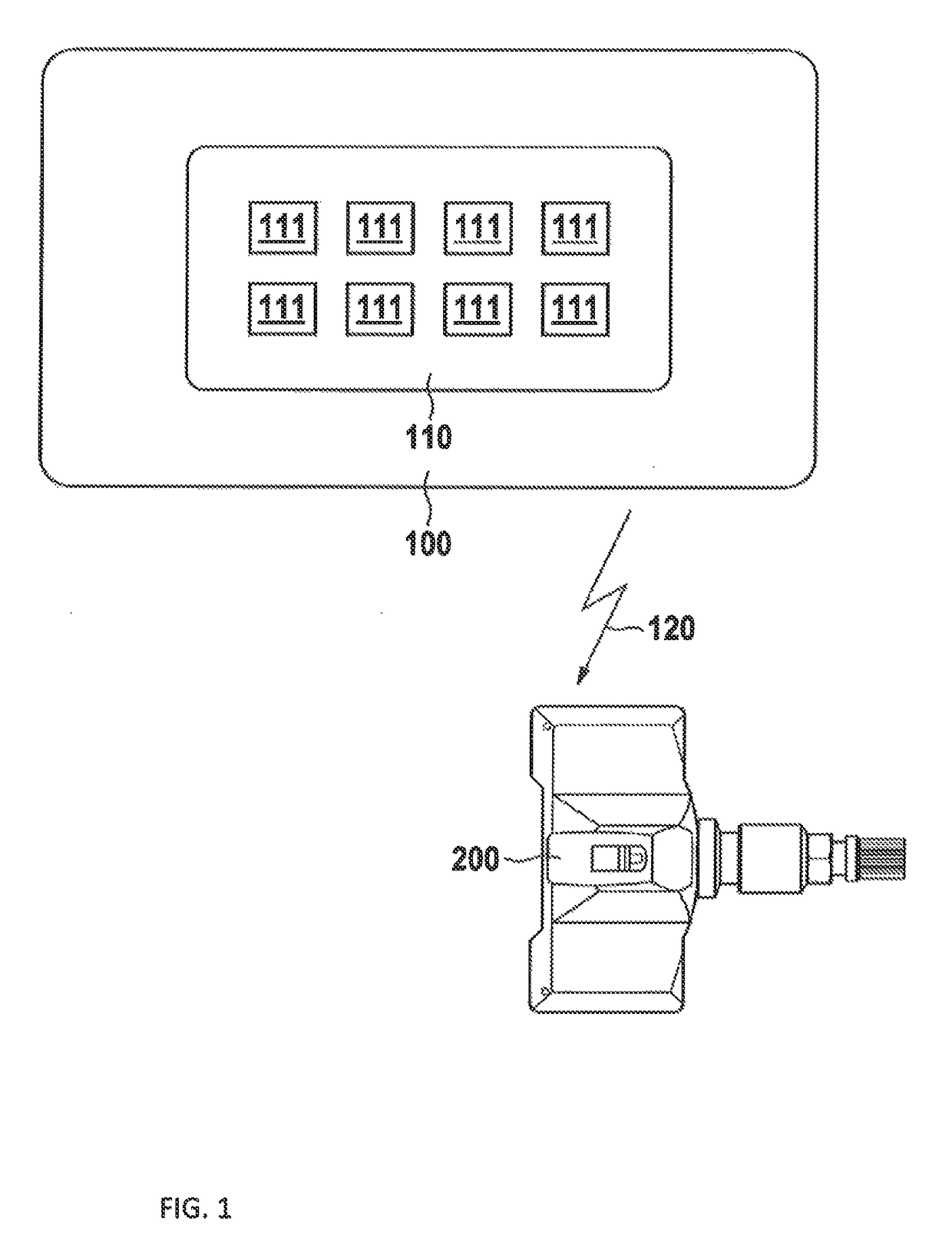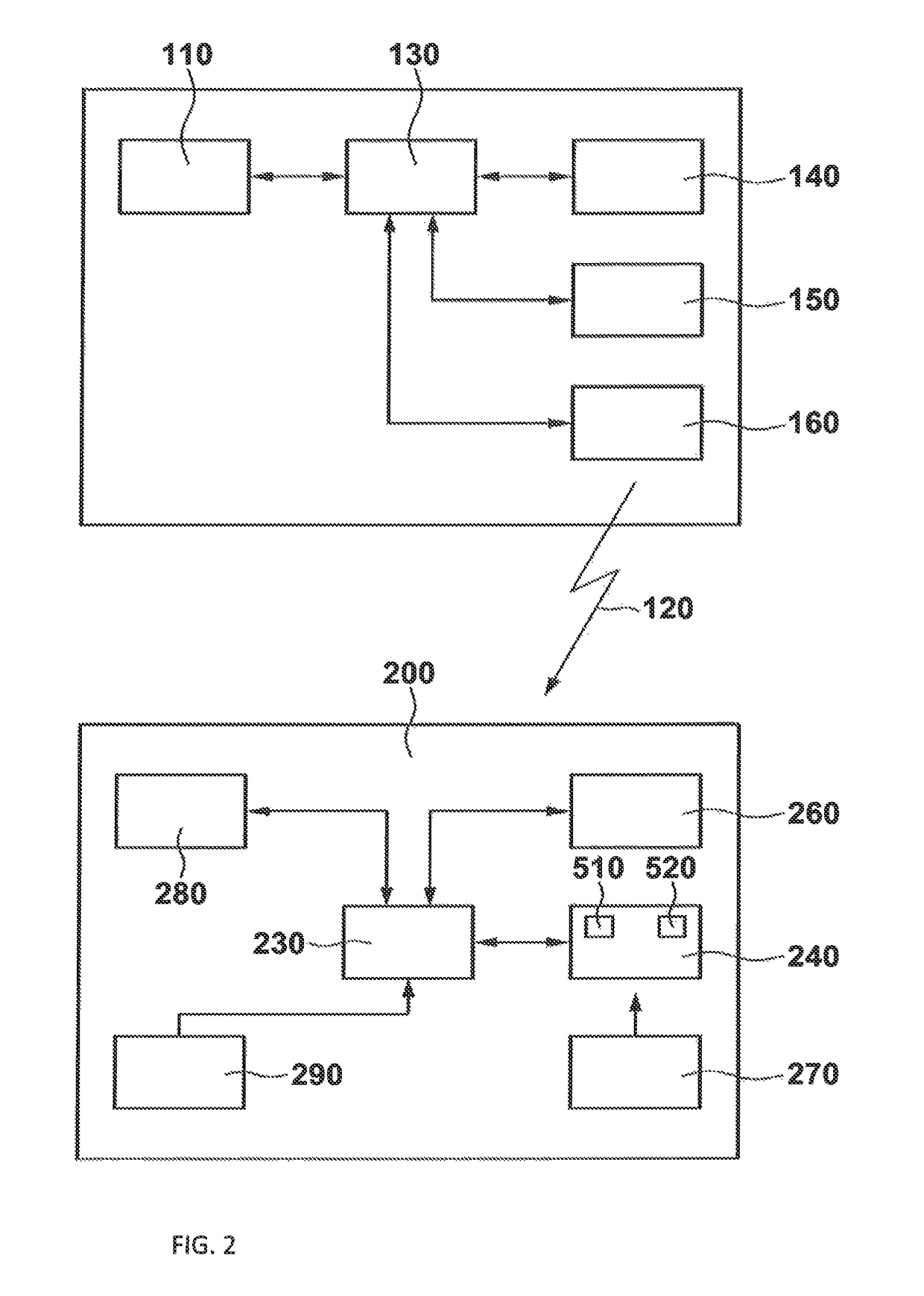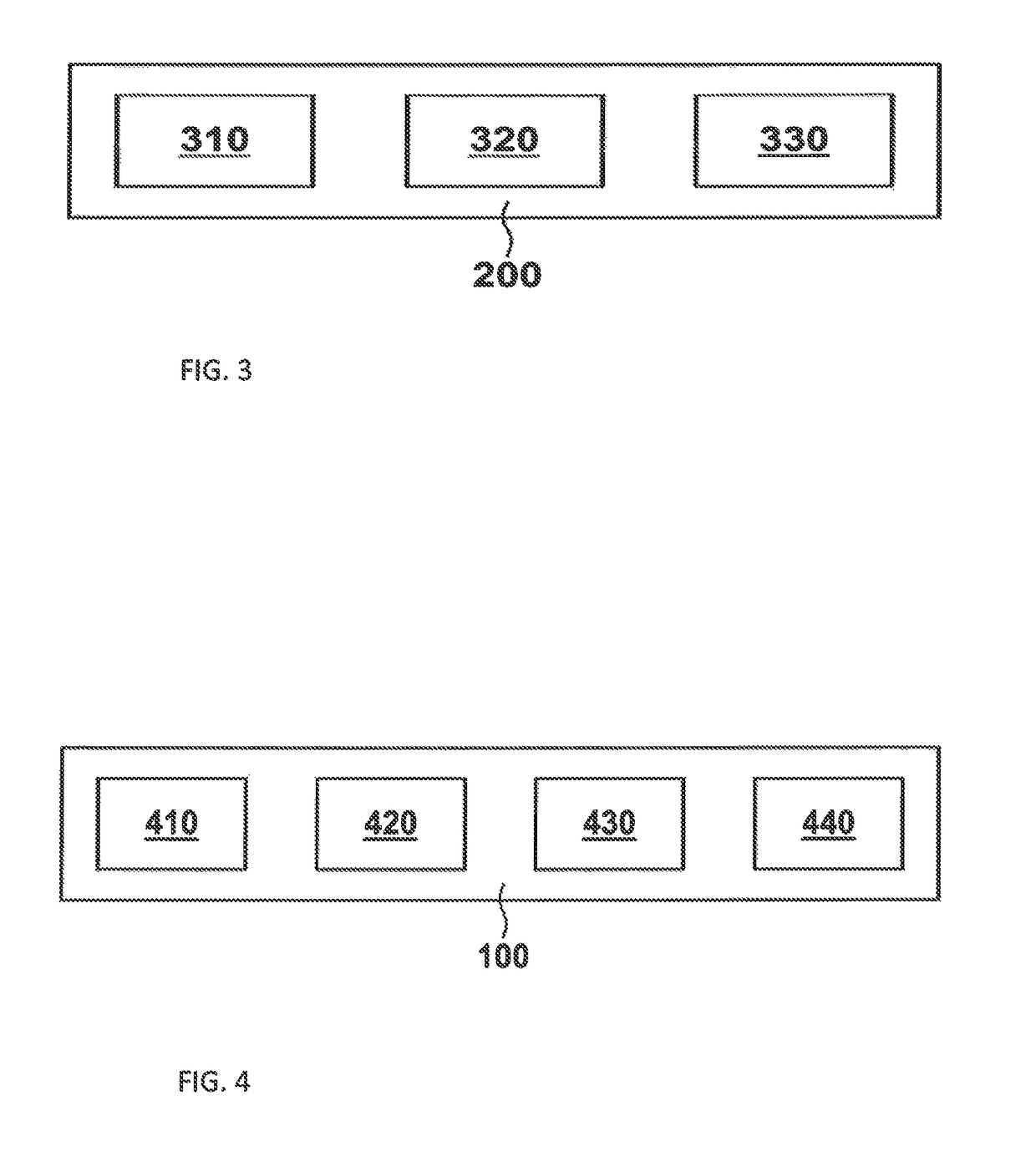Cross-platform universal tire pressure monitoring sensor
a technology of tire pressure monitoring and sensor, which is applied in the direction of tire measurement, tire parts, transportation and packaging, etc., can solve the problems of high initial investment of installer and supply, unsuitable use of a multitude of sensor types, and time-consuming sensor selection, etc., and achieves low cost, simple handling, and large flexibility
- Summary
- Abstract
- Description
- Claims
- Application Information
AI Technical Summary
Benefits of technology
Problems solved by technology
Method used
Image
Examples
Embodiment Construction
[0032]In FIG. 1 a basic TPMS programming system is shown. A programming unit 100 may have a display 110, which preferably is a touch screen. The display may provide the user a plurality of options, for example for selecting different car manufacturers, models and years. The programming unit will select the appropriate code for a TPMS sensor and upload it, for example via a wireless communication interface 120 to a TPMS sensor 200.
[0033]In FIG. 2, more details of a TPMS sensor programming system are shown. The programming unit 100 preferably has a microcontroller or microprocessor 130 which is further connected to a memory 140 or a storage. The memory may be organized as a database and may contain information about vehicles and TPMS sensors. It may be any kind of RAM / ROM, a disk drive or a network connected storage. It is further preferred, if the information about vehicles comprise at least one of car manufacturers, car models, manufacturing years, car identification number and spec...
PUM
 Login to View More
Login to View More Abstract
Description
Claims
Application Information
 Login to View More
Login to View More - R&D
- Intellectual Property
- Life Sciences
- Materials
- Tech Scout
- Unparalleled Data Quality
- Higher Quality Content
- 60% Fewer Hallucinations
Browse by: Latest US Patents, China's latest patents, Technical Efficacy Thesaurus, Application Domain, Technology Topic, Popular Technical Reports.
© 2025 PatSnap. All rights reserved.Legal|Privacy policy|Modern Slavery Act Transparency Statement|Sitemap|About US| Contact US: help@patsnap.com



